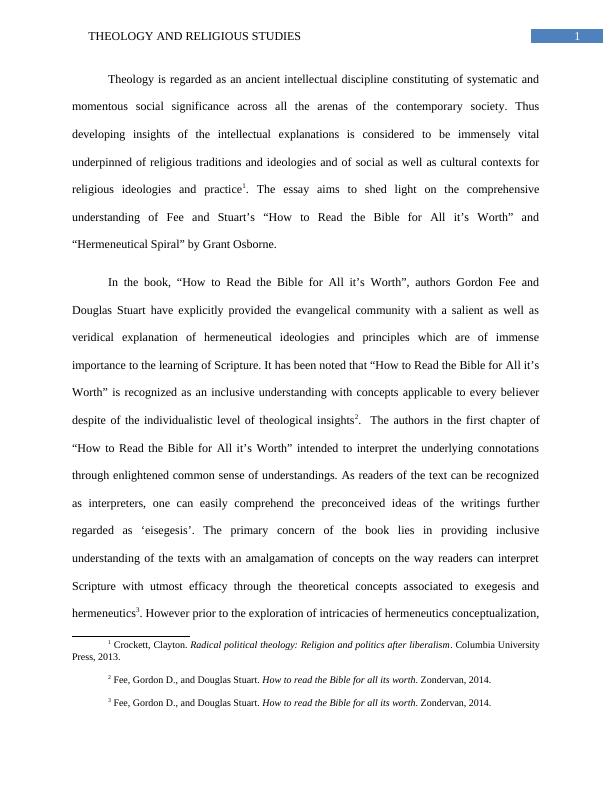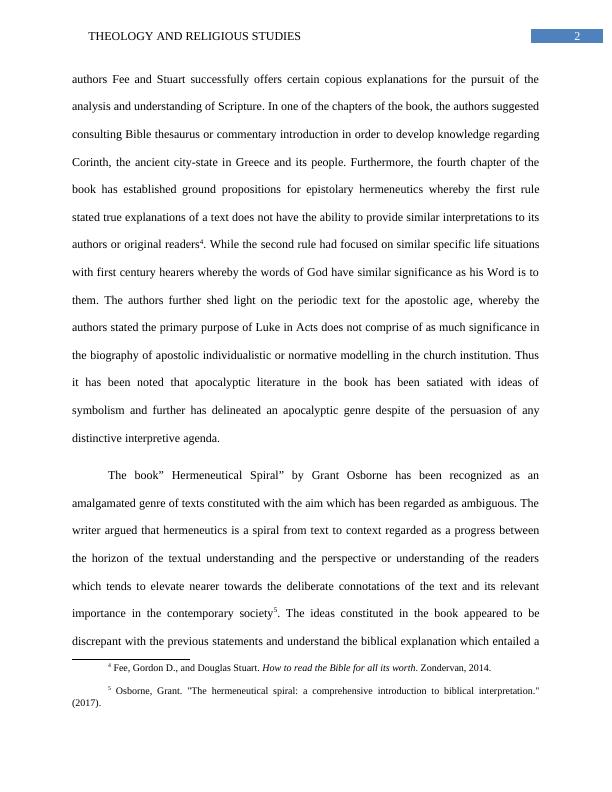Comprehensive Understanding of Fee and Stuart's How to Read the Bible for All it's Worth and Hermeneutical Spiral by Grant Osborne
8 Pages2015 Words269 Views
Added on 2023-06-10
About This Document
This essay sheds light on the comprehensive understanding of Fee and Stuart's How to Read the Bible for All it's Worth and Hermeneutical Spiral by Grant Osborne. It discusses the hermeneutical ideologies and principles, narrative criticism, and the importance of contextualization in biblical interpretation.
Comprehensive Understanding of Fee and Stuart's How to Read the Bible for All it's Worth and Hermeneutical Spiral by Grant Osborne
Added on 2023-06-10
ShareRelated Documents
End of preview
Want to access all the pages? Upload your documents or become a member.
Theology and religious studies.
|2
|284
|107
Hermeneutics. Student’s Name. Title of the Course Instr
|3
|336
|149
CS 215: Data Interpretation and Analysis
|3
|1497
|54
Theology and religious Studies Assignment
|10
|2704
|107
Hermeneutics: Importance in Interpreting Religious Texts
|7
|2335
|459
Hermeneutics of Revelation
|8
|1935
|385



